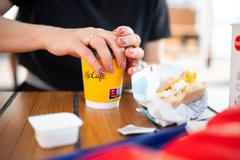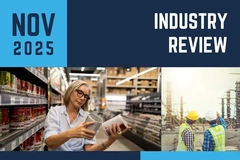
- Industry news
Industry news
- Category news
- Reports
- Key trends
- Multimedia
Multimedia
- Journal
- Events
- Suppliers
Suppliers
- Home
- Industry news
Industry news
- Category news
- Reports
- Key trends
- Multimedia
Multimedia
- Events
- Suppliers
Suppliers
EU container glass industry requires mass investments and cross industry collaboration to reach net zero, shows report

The European Container Glass Federation (FEVE) has released a report detailing its decarbonization initiatives, marking the first comprehensive research of its kind in the sector. The report is accompanied by an online map showcasing over 90 industry case studies across Europe, highlighting decarbonization efforts in the region.
The report emphasizes the need for collaborative action throughout the industry, especially in achieving a more circular, climate-neutral glass packaging sector. It also calls for greater government investments and financial incentives, saying an additional €20 billion (US$ 21.5 billion) is needed if the industry’s 2050 net zero goal is to be possible.
Michael Delle Selve, head of marketing and communications at the FEVE, tells Packaging Insights: “The transition to decarbonized glass will only be successful if it is a shared effort.”
“Governments must provide a supportive regulatory framework, industries must innovate and invest in cleaner technologies while brands and consumers must continue to trust glass and be aware of the choices they make when choosing a product in a given packaging.”
Accelerating energy transition
A focus in the industry’s path toward net zero goal is securing rapid access to affordable, low-carbon energy. Currently, natural gas combustion is responsible for 80% of the sector’s direct carbon emissions. The report reveals that more than 90% of glass containers produced in the EU come from companies that have committed to the Science-Based Targets initiative.
“Effective collaboration is absolutely essential for the energy transition, particularly around availability and affordability of green and low carbon energy and the infrastructure to deliver it,” says Selve.
 Future-proof packaging needs to protect people’s health and contribute to the circular economy.“From an industry perspective, we are committed to investing in breakthrough technologies such as hybrid furnaces, but the success of these innovations depends on the availability and affordability of low-carbon energy sources and access to finance. This is where the EU and national governments have a critical role to play. Public policy support is needed to ensure that the necessary infrastructure — such as grid upgrades for electrification and hydrogen pipelines — is in place.”
Future-proof packaging needs to protect people’s health and contribute to the circular economy.“From an industry perspective, we are committed to investing in breakthrough technologies such as hybrid furnaces, but the success of these innovations depends on the availability and affordability of low-carbon energy sources and access to finance. This is where the EU and national governments have a critical role to play. Public policy support is needed to ensure that the necessary infrastructure — such as grid upgrades for electrification and hydrogen pipelines — is in place.”
The report also notes that achieving the 2050 net zero target will also require significant financial support, including financial incentives, subsidies and a reduction in grid connection costs. Although the industry already invests over €600 million (US$647 million) annually for innovation and decarbonization, an additional €20 billion (US$ 21.5 billion) in capital expenditure is required by 2050 to achieve the net zero goal.
This conservative estimate excludes expected increases in operational costs tied to low-carbon energy.
“Recycling glass in our furnaces also reduces our CO2 emissions. So brands, retailers and end consumers do play an important part. Brands and retailers can explain to consumers the importance of truly recycling and sustainably sound consumption, which can, in turn, create demand for low-carbon products and closed-loop systems,” he continues.
“By choosing glass packaging, which is both reusable and infinitely recyclable while still remaining safe for health, brands and consumers are supporting a material that aligns with Europe’s broader circular economy goals. The European container glass industry has already demonstrated the power of partnerships through initiatives like ‘Close the Glass Loop,’ which brings together stakeholders from the entire value chain to increase glass collection and recycling rates.”
Embracing new technology
Glass furnaces, which generally have a lifespan of ten to 15 years with an estimated annual replacement rate of 7% to 10%, are gradually being replaced with those capable of operating on low-carbon technologies.
According to the new Political Guidelines for the European Commission 2024-2029, several financial instruments and policies will be developed over the next five years to help EU industries accelerate the transition to low-carbon technologies.
“One of the most impactful tools will probably be increasing the scale of investment in infrastructure and innovation through the establishment of a Clean Industrial Deal. This policy framework will focus on supporting energy-intensive sectors like glass, channeling funds toward low-carbon technologies such as electric and hydrogen-powered furnaces,” Selve highlights.
“The Industrial Decarbonization Accelerator Act also aims to streamline investment in industrial decarbonization infrastructure and will also be crucial in speeding up planning and permitting times, thus facilitating quicker adoption of these technologies. New energy policies aimed at reducing the cost and increasing the availability of low carbon energy sources will be essential.”
Sustainable choice for the future
In addition to reducing emissions, container glass offers key environmental and consumer safety benefits. Glass retains its quality no matter how many times it’s processed. The report shows that this recyclable material had a collection rate of 80.2% in Europe in 2022. The industry’s closed-loop recycling system reduces waste and positions glass as a safer, non-leaching packaging option for consumers.
“We want consumers and customers to trust in glass, to know we are decarbonizing our production and by highlighting our environmental and health benefits. Glass is both reusable but also fully recyclable and can be endlessly recycled without any loss of quality. It always remains safe no matter how many times it’s recycled. This makes glass a truly circular packaging material.” A glass bottle or jar can be remelted and becomes the main resource needed to produce new bottles and jars.
A glass bottle or jar can be remelted and becomes the main resource needed to produce new bottles and jars.
“Through initiatives like ‘Close the Glass Loop,’ which aims for a 90% glass collection rate by 2030, consumers understand the positive impact of recycling every glass item they use. The health and safety benefits of glass, being inert and needing no plastic liners to protect the food from the packaging are also key selling points to build trust.”
The company engages with consumers through the platform Friends of Glass to raise consumer awareness about glass packaging’s sustainability. It is building a community of informed consumers who choose glass for its environmental and health advantages.
“Through our platform, consumers are informed about how using and recycling glass reduces carbon emissions. Recycling glass saves energy, natural resources and cuts CO2 emissions during production. This transparent messaging on the tangible benefits of glass helps to establish trust by showing how glass packaging supports climate neutrality goals.”
“Additionally, the Glass Hallmark B2B platform offers practical support to companies looking to leverage the sustainability narrative of glass. The platform provides downloadable toolkits, communication materials and guidance on how to get added value from using glass packaging. The Glass Hallmark acts as a bridge between the industry and its customers, driving the message that choosing glass is choosing a sustainable future,” Selve concludes.










